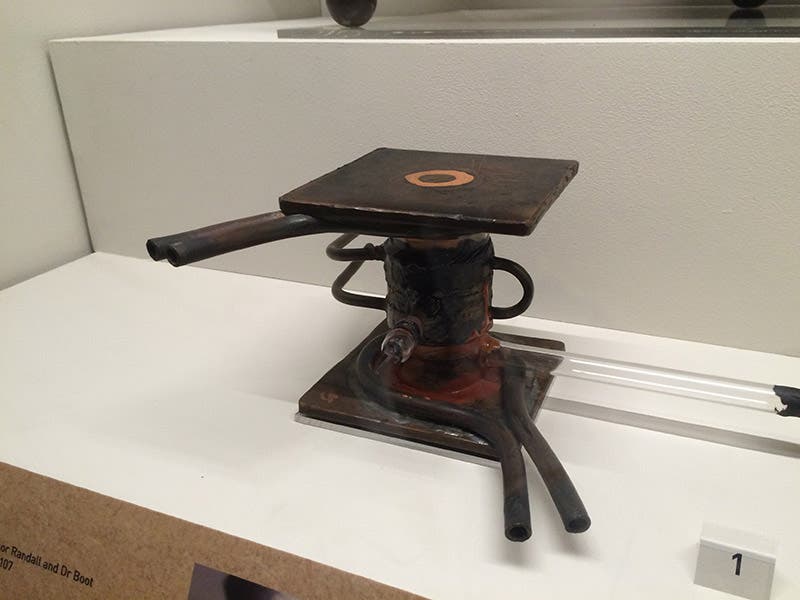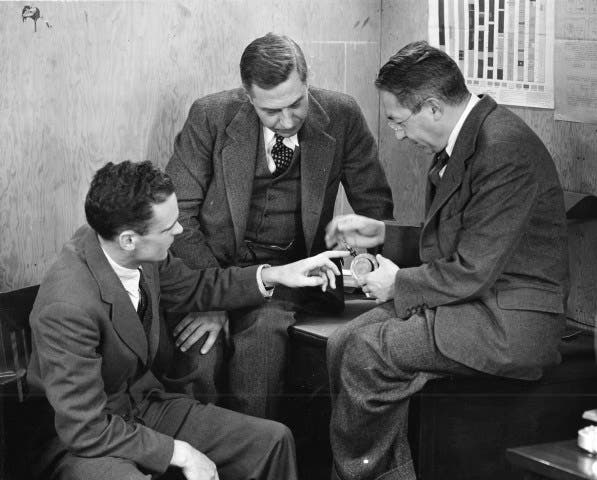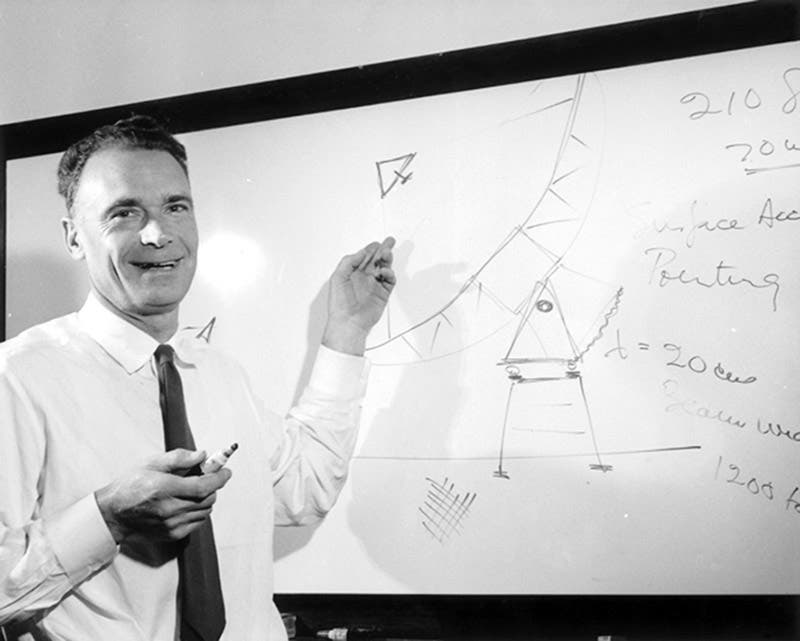Scientist of the Day - Edward George Bowen
Edward George Bowen, a Welsh physicist, was born Jan. 14, 1912. Bowen, who was usually called by his nickname “Taffy”, was one of two men primarily responsible for the invention and development of radar in Britain during the period between 1935 and 1940. In 1935, Robert Watson-Watt, an expert in radio engineering, was asked by a government official: can we build a death ray to shoot down aircraft? Watson-Watt’s reply was, no, but we might be able to build a ray to detect their presence. Given the go-ahead, Watson-Watt began to build a staff, and the first man he hired was Bowen, who was given the job of assembling, or building from scratch, the necessary transmitters and receivers.
The problems were numerous: the early transmitters required immense amounts of power; the only waves they could generate were tens of meters across, meaning they had to have very large antennas to detect the return of the waves; and, because of the size of the waves, they were very imprecise in locating positions. But within a year, Bowen was able to detect an airplane at 20 miles distance, and the range soon grew to 100 miles. It was decided to erect a chain of radar installations along the coast of Britain, which were in place by 1938, and Chain Home, as it was called, was instrumental in allowing England to withstand the Battle of Britain the next year, as the radar towers were able to detect the German Luftwaffe in time to scramble the fighters, issue air raid warnings, and allow the populace to seek shelter. A photograph shows a Chain Home installation at RAF Polling in Sussex (first image). The tall steel towers at left are the transmitters; the wooden towers at right are the receivers.
The next big problem was developing radar that could be carried aboard airplanes. The Chain Home installations were house-sized and weighed many tons, with 300-foot antennas, and could hardly take to the air. Bowen and his team were able to shrink the wave size to one meter, which meant that antennas could be smaller and more precise and the transmitters lighter. The big advance here was the invention of the cavity magnetron, which could generate waves just a few centimeters long (second image). You probably have a cavity magnetron in your microwave oven. Bowen did not invent the cavity magnetron, but in August of 1940, Bowen was part of a secret mission to the United States, called the Tizard mission, which brought to the U.S. all of Britain’s most recent work on scientific warfare, including progress toward an atomic bomb, and the cavity magnetron. Bowen showed the cavity magnetron to American engineers and told them what was needed on the radar front, and immediately a special laboratory was set up at MIT and given the code name Radiation Laboratory, or Rad Lab; it was directed by Lee DuBridge and funded by Alfred Lee Loomis, both of whom have been Scientists of the Day.
Bowen and a large team of American physicists and engineers went to work. Within a year they had developed and were manufacturing airborne radar that could detect not only other airplanes, but submarines, and they were rapidly installed in U.S. fighter aircraft. By the time the United States entered the war in December of 1941, radar had already come of age and was instrumental in winning the Battle of the Atlantic and eliminating the U-boat menace.
We have only a few photos of Taffy Bowen in his World War II days (he later moved to Australia and designed and installed that country’s first radio telescope; many of his photos have the telescope in the background). Our third image is a photo taken at Rad Lab and showing Bowen at front left, with Lee DuBridge in the center and I.I. Rabi, a prominent American physicist, at the right. The photo just above shows Bowen lecturing about radar.
Dr. William B. Ashworth, Jr., Consultant for the History of Science, Linda Hall Library and Associate Professor emeritus, Department of History, University of Missouri-Kansas City. Comments or corrections are welcome; please direct to ashworthw@umkc.edu.









